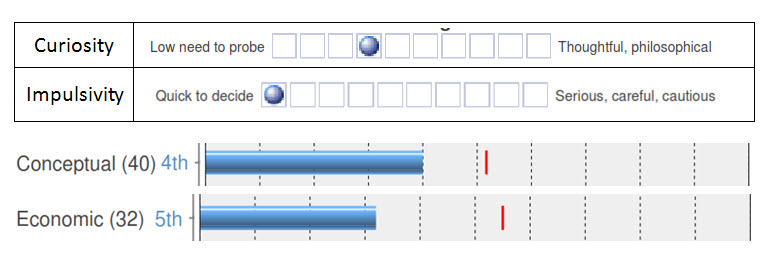How Leadership Assessment Tests Can Predict the Rise and Fall of a High-Potential Superstar
Case StudyBob Smith (name changed) had been the darling of senior management and board of directors (BOD). Bob is the CFO of an up and coming professional services firm. The firm has done exceptionally well and he had in part been credited for its success to date. The firm is primed for explosive growth and expectations were laid that Bob would play a critical leading role. He was unanimously applauded by his boss and peers for his strong work ethic, for “rolling up his sleeves,” carrying a big load, and his remarkable quickness and smartness when it came to working with numbers.
Bob’s also is a first class schmoozer and his ability to awe people with his charisma and aforementioned mastery of numbers and charisma has worked well for him. Up until now.
Unfortunately the luster on Bob’s brilliance is beginning to dull. His star is falling. Both the CEO and Board of Directors are beginning to worry about Bob’s ability to keep ahead of the growth and deal with an increasing load of responsibilities. In fact, they aren’t even sure he can keep pace because he is missing important deadlines more frequently. And his charisma is becoming a bit transparent. Some colleagues are beginning to lose confidence and getting put off by his defensiveness when questioned about his approach or details he’s missed.
Bob is not the only high-potential superstar whose glow vaporized over time. With the pace of change accelerating, the complexity of roles and jobs growing, and the pressure on resources and results increasing, the skills and abilities that allowed many workers to rise up and dazzle management in the past now are barely distinguishable from the rest of the average Joe and Sue. As a result, the combination of a changing marketplace and business climate has forced more and more companies to ask, “how do we know that the employee we have in place (or about to promote or hire) is the right person?”
A corollary is then “can the employee be coached or are we expecting a pig to fly?” Bob’s situation presents the perfect scenario to discuss how an employer can know if an investment in executive coaching will show a return on investment and/or how effective it might be.
An executive coach was retained by Bob’s employer to assess and mentor him. After receiving feedback from his boss and co-workers, Bob completed a package of executive assessments. As is the case so often, many of the areas in need of improvement can be directly linked back to personality traits, behavioral style, personal values, and general mental abilities.
What follows is a brief summary about how specific feedback aligned nearly perfectly with areas for improvement desired by his employer. The assessments revealed the following:
1. Comment: “moves from crisis to crisis” and “misses important deadlines.” Bob’s nature is to keep busy and juggle lots of projects. These are positive characteristics and often rewarded excessively by managers. Unfortunately he has a low need to complete tasks and pay attention to details. Because he is very bright (revealed when assessing general mental abilities), Bob has been able to compensate earlier in his career. But as the role of the CFO expands and the complexity of the job increases, employees like Bob eventually reach their capacity and mistakes are made including missing critical deadlines.

2. Comment: “tends to miss the forest for the trees, missing the big picture…doesn’t always drill down enough.” Poor strategic thinking, anticipation, and seeing the big picture can also be traced back to Bob’s personality traits and values. Bob simply doesn’t ask the right questions, enough questions, and/or go deep enough with due diligence. His inquiry goes only as far as he feels he needs to and then he moves on, sometimes relying on superficial evidence or unreliable sources. Not only is probing deep enough foreign to his DNA, Bob is not highly motivated to do so. His low Conceptual value is in the 40 percentile of the population – a challenge for someone like Bob whose role requires high level analysis and the consumption of a continuous stream of information .

The even lower importance he gives to Economics raises two critical questions:
(1) Can Bob be motivated to change and give more attention to resourcefulness, details, and the bottom line; and
(2) Is this firm a good match and the right place for Bob’s talent?
A final factor that must be weighed in assessing Bob’s potential to improve is his low criticism tolerance and even lower self-control. In other words, Bob tends to take comments, feedback, and even questions about his work personally. His behavioral style is such that he communicates out loud. Even if unintentional he might speak with thinking and as a result appears defensive, even if it’s unintentional.
Bob is typical of many managers and senior executives in today’s workforce. Past success is no longer the best predictor of future success. Increasing complexity, ambiguity, and change requires that the skills required by nearly every worker are more advanced, even if the worker is staying in the same job. For managers and professional salespeople, the bar is raised even higher and moving up daily. Identifying and assessing core traits, values, and abilities that might interfere with one’s future success or even derail a career as early as possible is more important than ever before.
